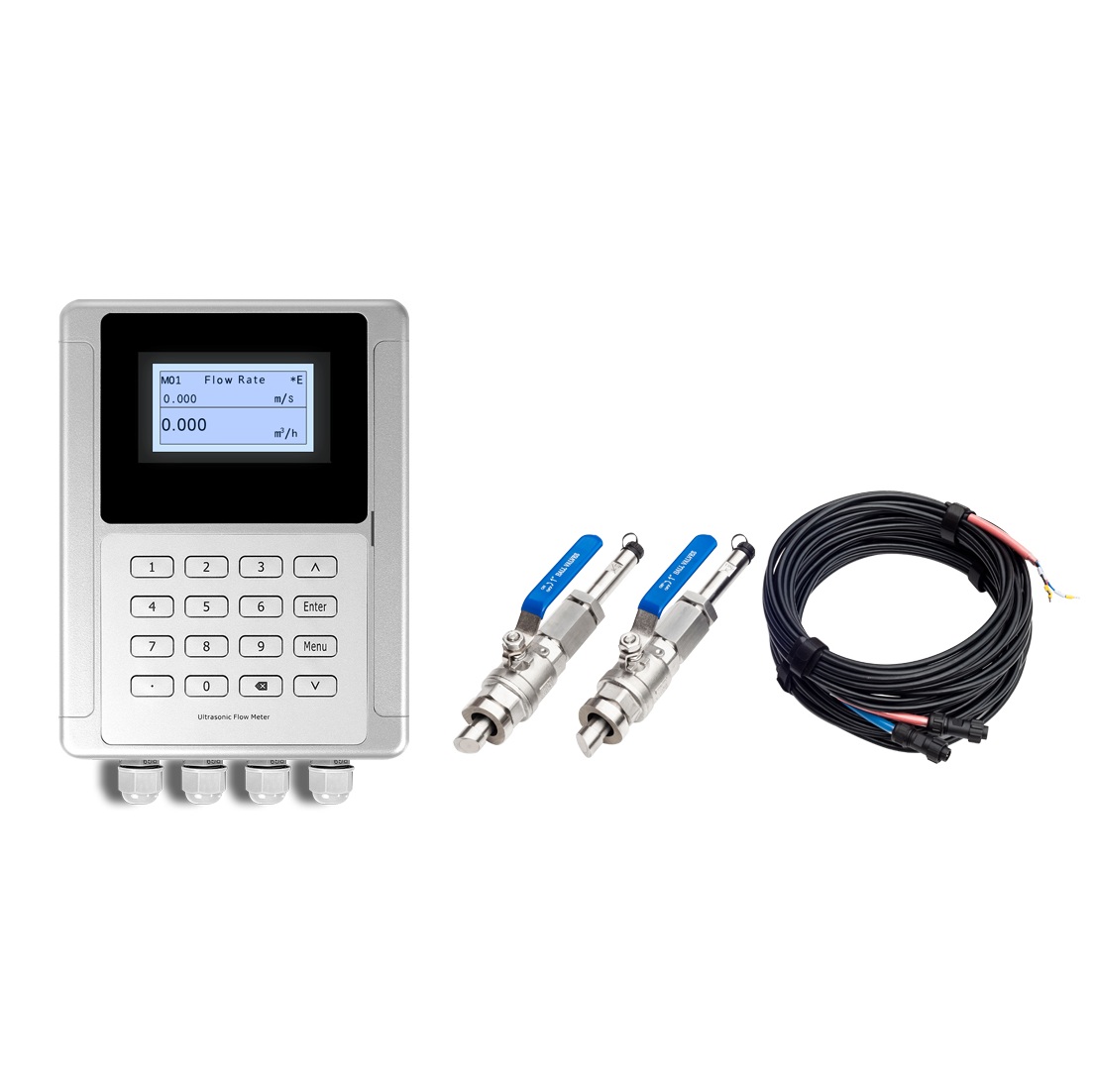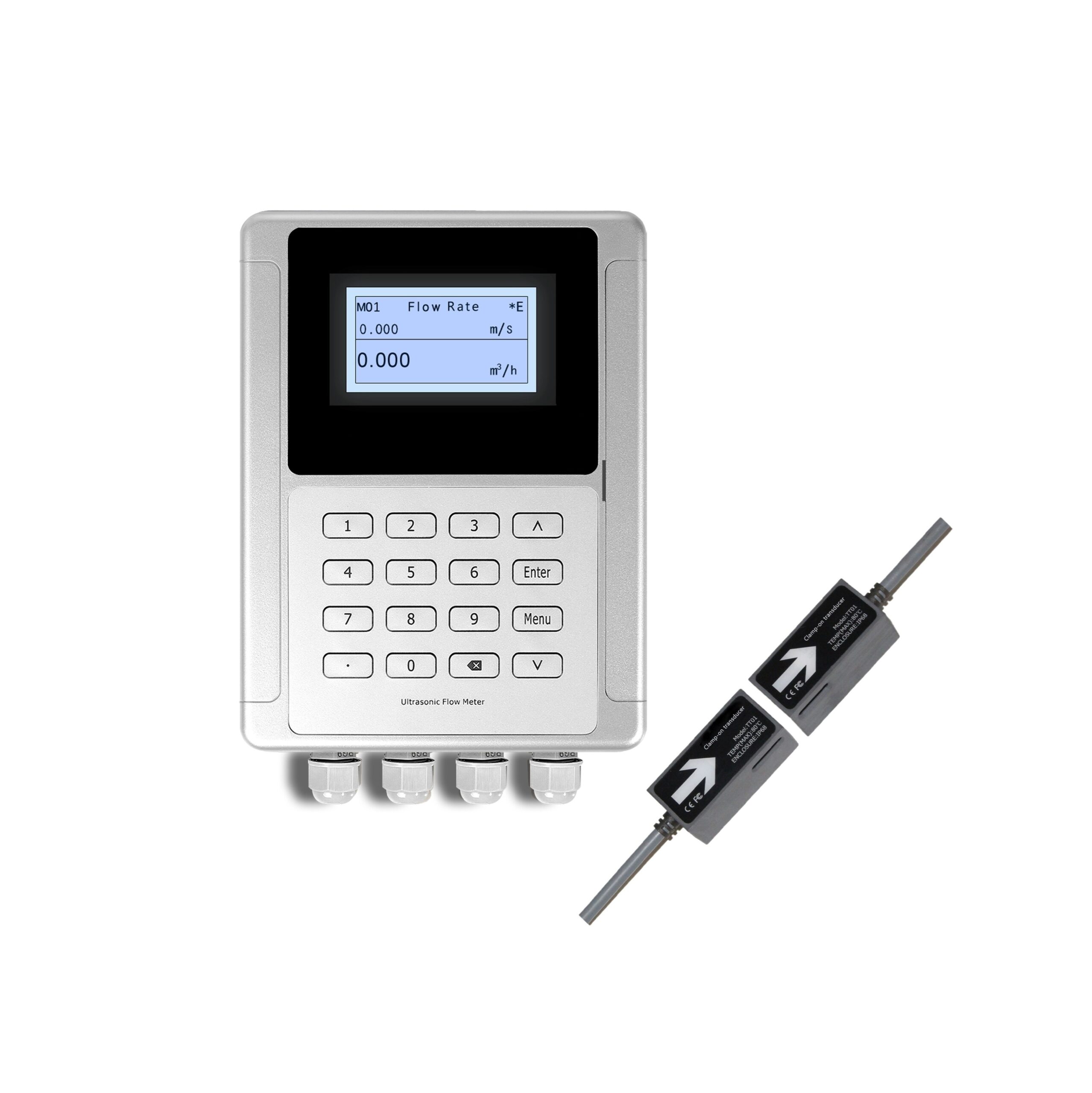Installing flow meters in large pipes often leads to high costs and complex modifications, causing project delays and budget overruns.
An insertion type ultrasonic flow meter is a device that measures flow by inserting sensors directly into the pipe through a tap or valve, eliminating the need for pipe cutting or system shutdown.

Insertion Type Ultrasonic Flow Meter Overview
Let me share my experience with these versatile instruments to help you make informed decisions.
What is the Insertion Type of a Flowmeter?
Many users struggle to choose between traditional inline and insertion flowmeters for their applications.
Insertion flowmeters are instruments where the sensing element is mounted through a hole in the pipe wall, measuring flow at a specific point and calculating total flow based on pipe profile.
From my field experience:
Key Components
-
Main Elements
Component Function Importance Sensor Probe Flow detection Primary measurement Mounting Hardware Secure installation Stability Depth Scale Position control Accuracy Process Connection Pipe interface Safety -
Design Features
- Hot-tap capability
- Retraction mechanism
- Depth adjustment
- Orientation markers
Application Benefits
-
Installation Advantages
- Minimal pipe modification
- Lower installation cost
- Reduced downtime
- Easy maintenance
-
Operational Features
- Flow profile measurement
- Multiple point sensing
- Dynamic adjustment
- Simple removal
What is the Difference Between Clamp-On and Insertion Ultrasonic Flow Meter?
Understanding these differences is crucial for selecting the right technology for your application.
Clamp on Ultrasonic flowmeters use sound waves to measure flow, while insertion meters physically enter the flow stream, offering different installation and measurement approaches.

Clamp On Ultrasonic Flow Meter
Based on my technical knowledge:
Technology Comparison
-
Measurement Principles
Feature Ultrasonic Insertion Method Sound waves Direct contact Installation External/Internal Intrusive Maintenance Minimal Regular Accuracy Higher Variable -
Application Considerations
- Flow conditions
- Pipe characteristics
- Maintenance access
- Accuracy requirements
Selection Criteria
-
Key Factors
- Pipe size
- Fluid properties
- Installation constraints
- Budget limitations
-
Performance Aspects
- Measurement accuracy
- Long-term stability
- Maintenance needs
- Operating costs
How to Install an Insertion Type Flow Meter?
Improper installation can lead to inaccurate measurements and potential safety hazards.
Install an insertion flow meter by first welding a mounting connection, inserting the probe to the correct depth, aligning it properly, and securing it in place.
Drawing from my installation experience:
Installation Process
-
Preparation Steps
Step Action Purpose Site Survey Location check Accessibility Safety Review Risk assessment Personnel safety Tool Gathering Equipment prep Installation efficiency System Planning Shutdown coordination Minimal disruption -
Installation Sequence
- Mount connection
- Insert probe
- Align sensor
- Secure position
Safety Considerations
-
Critical Precautions
- Pressure control
- Personal protection
- Tool selection
- Emergency procedures
-
Verification Steps
- Leak testing
- Signal checking
- Position verification
- System validation
What is the Correct Installation of a Flow Meter?
Poor installation practices often result in measurement errors and equipment damage.
Correct flow meter installation requires proper upstream/downstream straight runs, accurate alignment, secure mounting, and appropriate grounding.
From my professional expertise:
Installation Requirements
-
Location Considerations
Factor Requirement Impact Straight Run 10D upstream Flow profile Orientation Vertical/Horizontal Accuracy Access Maintenance space Serviceability Protection Environmental Longevity -
Technical Requirements
- Proper grounding
- Signal shielding
- Vibration isolation
- Temperature protection
Quality Assurance
-
Installation Checks
- Alignment verification
- Connection security
- Signal quality
- Zero flow test
-
Documentation
- Installation records
- Calibration data
- Test results
- Maintenance schedule
Conclusion
Successful implementation of insertion type flow meters requires understanding their principles, careful installation planning, and adherence to best practices for long-term reliability and accuracy.
